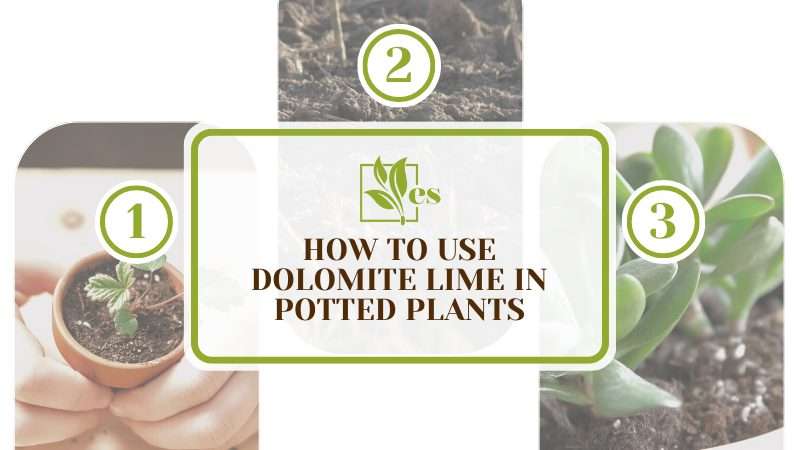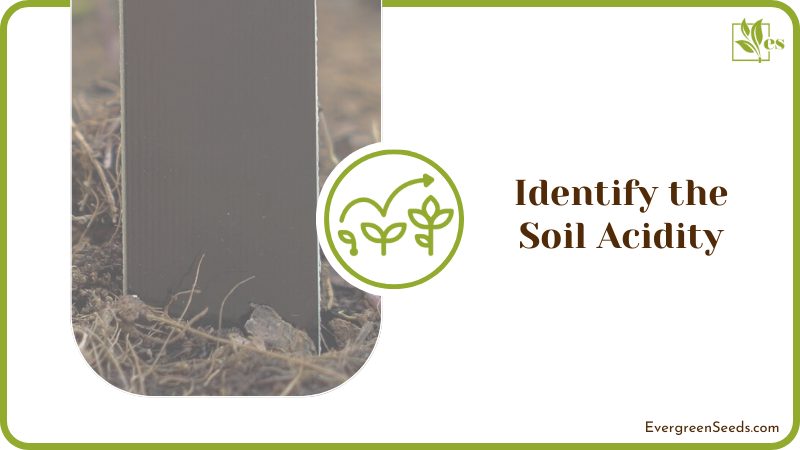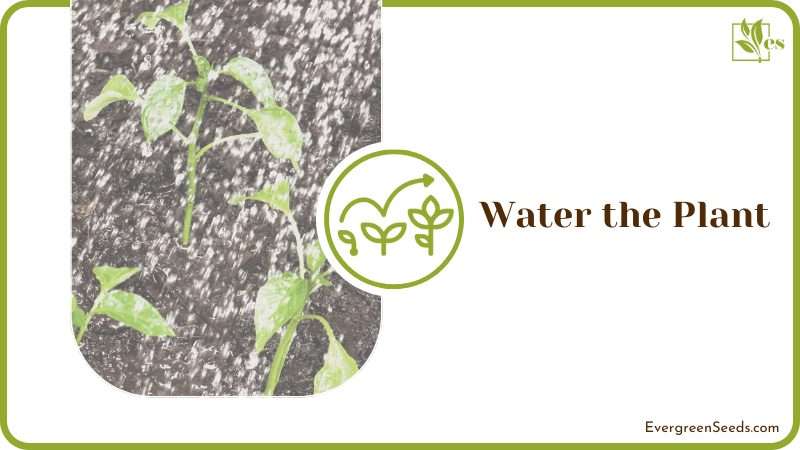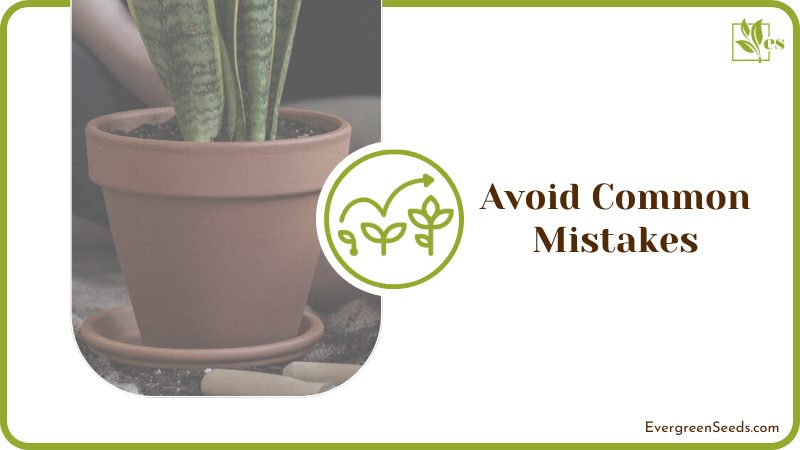Learning how to use dolomite lime in potted plants is important for many gardeners and indoor plant enthusiasts.

Dolomite lime, made from the mineral calcium magnesium carbonate, can bring numerous benefits to your plants in a pot, from adjusting soil pH levels to improving nutrient uptake and increasing plant growth. So, continue reading to learn how to harness the power of this magical product.
JUMP TO TOPIC
How To Effectively Use Dolomite Lime in Potted Plants?
To effectively use dolomite lime in potted plants, apply it around the plants every three months. You’ll first need to measure the pH level of the soil, and then calculate how much lime you need to add to get the pH to the recommended value for your specific plants. Needless to say, you can use dolomite in any type of soil.
Dolomitic lime is a soil additive that may raise the pH of acidic soils. It includes calcium and magnesium carbonates, which are necessary minerals for plants. Here’s how to use it:
– Identify the Soil Acidity
Before using dolomitic lime, it’s important to determine the acidity of your soil. You can utilize a soil testing kit to measure the pH levels of your soil.

If the pH appears below 7, it is considered acidic and can benefit from adding a garden or dolomite lime.
– Choose the Right Type
Various types of this product are available commercially and choosing the right one for your plants is necessary. Look for a high-quality product that is finely ground and free of impurities. Make sure you know about dolomite lime vs. garden lime, as these are both different and can have different effects on plants.
– Calculate the Amount Needed
You must know how much dolomite lime per gallon of soil to add. The amount of product you need depends on the size of your container and the soil’s current pH. Adding 1/2 to 1 cup of it per gallon of soil is recommended.
– Prepare the Soil
Before adding this product to the soil, mixing it thoroughly is important to ensure even distribution. You can do this by removing the plant from its pot and mixing the dolomite into the soil with your hands.
– Repot the Plant
Once this product has been evenly mixed into the soil, place the plant back into its pot and make sure it is firmly in place. Fill any gaps in the soil around the base of the plant with additional soil.
– Water the Plant
After using dolomite, it is important to water your plant thoroughly to help distribute the lime throughout the soil. Do not over-water, as this can cause the lime to leach out of the soil and become less effective.

If you are wondering, “can I mix dolomite lime with water?” then yes, if it’s in powder form, you can, but not if it’s in its natural form. Tap water can be used without any problems.
– Monitor the pH of the Soil
After a few weeks, it is a good idea to test the pH levels of the soil again to see if the product has had the desired effect. If the dolomite lime pH levels are too low, you may need to add dolomite lime.
– Reapplying Dolomite Lime
You may be wondering how to apply dolomite lime. Dolomite can continue to be used in plants as needed, but it is generally recommended to reapply it every 6 to 12 months to maintain the desired pH levels.
How To Enhance the Effect of Dolomite Lime on Plants?
To enhance the effect of dolomite lime on plants, you’ll need to apply it correctly but also use it along with other solid amendments such as compost. You’ll also need to water the soil adequately to ensure lime gets dissolved and absorbed by your plants.
It is a popular soil amendment used to adjust soil pH levels and provide plants with important nutrients such as calcium and magnesium. When used correctly, it can enhance the growth and health of plants.
– Understand the Importance of Dolomite Lime
It can also be utilized to adjust the pH levels of soil, which is important for the health and growth of plants. Acidic soil can prevent plants from absorbing important nutrients, leading to stunted growth and poor health. By raising the pH levels of the soil, dolomite lime makes it easier for plants to access the nutrients they need.
In addition to adjusting soil pH levels, it also provides plants with important nutrients such as calcium and magnesium. For example, blossom end rot is a common tomato and pepper disease caused by soil calcium deficiency. Dolomite lime for tomatoes is a good calcium source, and adding it to the soil may help avoid blossom end rot. This results in healthier, more productive plants.
– Apply Correctly
Dolomite should be spread evenly over the soil surface and incorporated into the soil using a cultivator or garden fork. The amount of product needed will depend on the current pH levels of the soil, as well as the type of plants you are growing.
– Use in Conjunction With Other Amendments
This product is the most effective when used with other soil amendments. For example, adding compost or well-rotted manure can help to improve the overall health and fertility of the soil.
– Ensure Proper Irrigation
Proper irrigation is necessary to ensure that the product has the desired effect. Over-watering can leach away the lime and other soil amendments, while under-watering can prevent plants from absorbing the necessary nutrients.
How To Avoid Common Mistakes When Adding Dolomite Lime To Plants?
To avoid common mistakes when adding dolomite lime to plants, you’ll first need to know what they are.

These mistakes include over-liming, not testing the soil’s pH level, and adding lime to the wrong soil type and for the wrong plants.
– Do Not Over-lime
One of the general mistakes when using this product in potted plants is adding too much of it. Over-liming can raise the pH levels of the soil too high, making it difficult for the plants to absorb important nutrients. This can result in stunted growth, yellow leaves, and other problems. Following the recommended application rates when adding this product to potted plants is important.
– Test the Soil’s pH Level First
Before adding this product to plants, it is necessary to test the pH of the soil to determine the current level of acidity. Without testing the pH of the soil, it is impossible to determine how much product should be added and whether it is needed.
– Add Lime to the Correct Soil and for the Correct Plants
Not all soils benefit from the addition of dolomite lime. Some plants, such as those that prefer acidic soils, can be harmed by adding dolomite lime. It is important to research the specific needs of the plants in your pots before adding the product to ensure that it is appropriate for them.
– Add Lime at the Right Time
The timing of adding this product to plants in pots is also important. Lime should not be added to the soil when the plants are actively growing, as this can cause stress and damage the roots. It is best to add lime to the soil in the fall or winter when the plants are dormant.
– Incorporate the Lime Into the Soil
After adding this product to pot plants, it is important to incorporate it into the soil to ensure it is evenly distributed. Simply spreading the lime on top of the soil will not have the desired effect, as the lime will not be able to reach the roots of the plants.
– Keep an Eye on the pH of the soil
After adding lime to a potted plant, it is important to monitor the soil’s pH level to ensure that it remains within the appropriate range. The pH should be tested regularly to ensure that the lime has the desired effect and to make adjustments as needed.
References
- Meda Anderson, R Pavan Marcos A, Cassiolato Marcelo E, M. Miyazawa. (Jun 2002). Dolomite limes reaction applied on the surface of a sandy soil of the Northwest Paraná, Brazil. Brazilian Archives of Biology and Technology.
Retrieved from https://www.researchgate.net/figure/Effect-of-surface-applied-dolomite-lime-on-soil-pH_fig1_26373859












